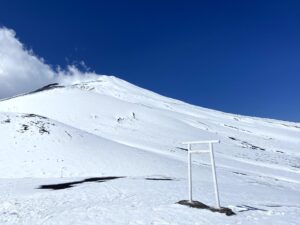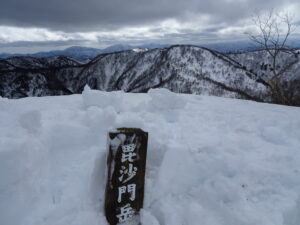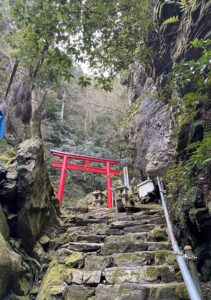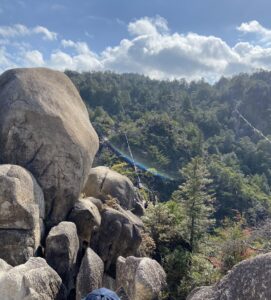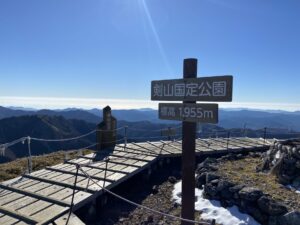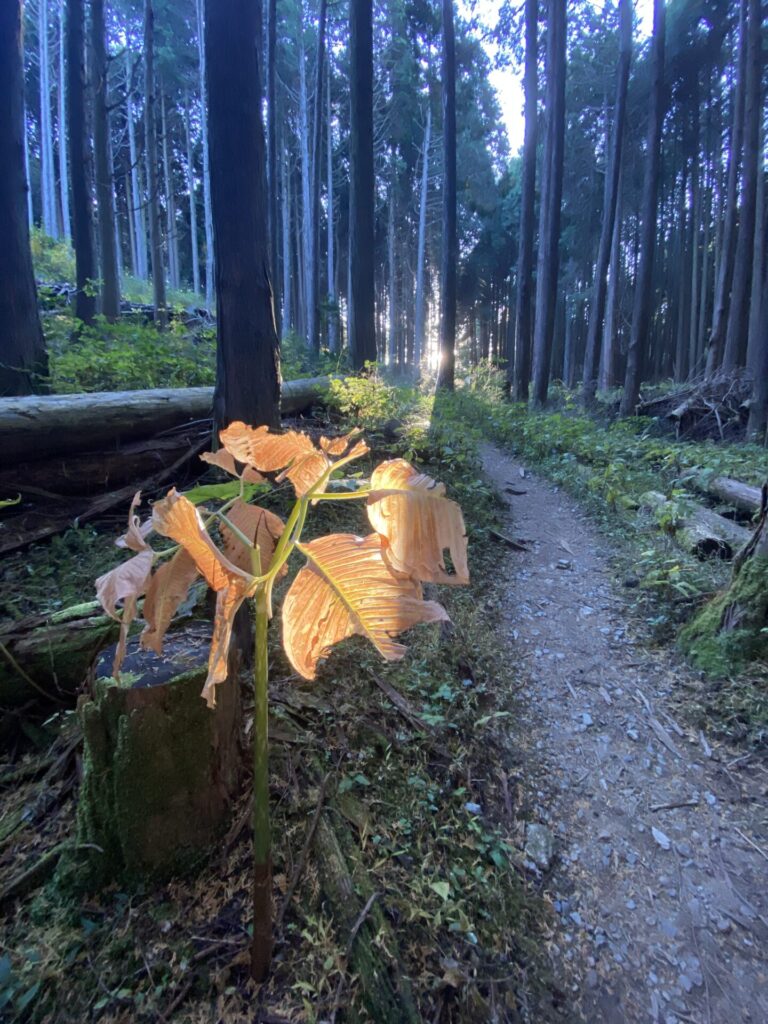
Time flies, it's already November. The days continue to be warm enough to make us sweat, but I hope everyone is keeping well. I've been a bit busy lately, with translation exams and work piling up, and thoughts about the news of wars, which has delayed my blog updates. In the city, Christmas decorations are starting to appear in stores, signaling the busy season's arrival. When I went to work and passed through Midosuji, I noticed that the lights were already set up. It seems a bit early, doesn't it?This weekend, I went for an early morning hike to Mount Katsuragi. There have been daily news reports about bear sightings, but there are no bears on Mount Katsuragi, so bear bells are unnecessary. A few years ago, there was a rumor about a bear sighting on Mount Katsuragi, but I've hiked there alone many times and never felt the presence of bears. I wonder if it was a case of mistaken identity, or perhaps someone in a bear costume was spotted (^^). This year, there seems to be a poor acorn crop and other unusual changes in the mountains, which might be making life harder for the animals. If you start climbing around 6 am, you can reach the summit by 7:30 am. The Tengu Trail has become more rugged than before.
In the early morning, the mountain trails are quiet, and at the summit, it's often just me. Morning jogs or climbs at this time allow you to fully enjoy the solemn atmosphere as the sun rises, and it feels like you can draw energy from nature. Additionally, you can see many small birds flying around, possibly searching for their breakfast. This time of year is perfect for bird-watching.
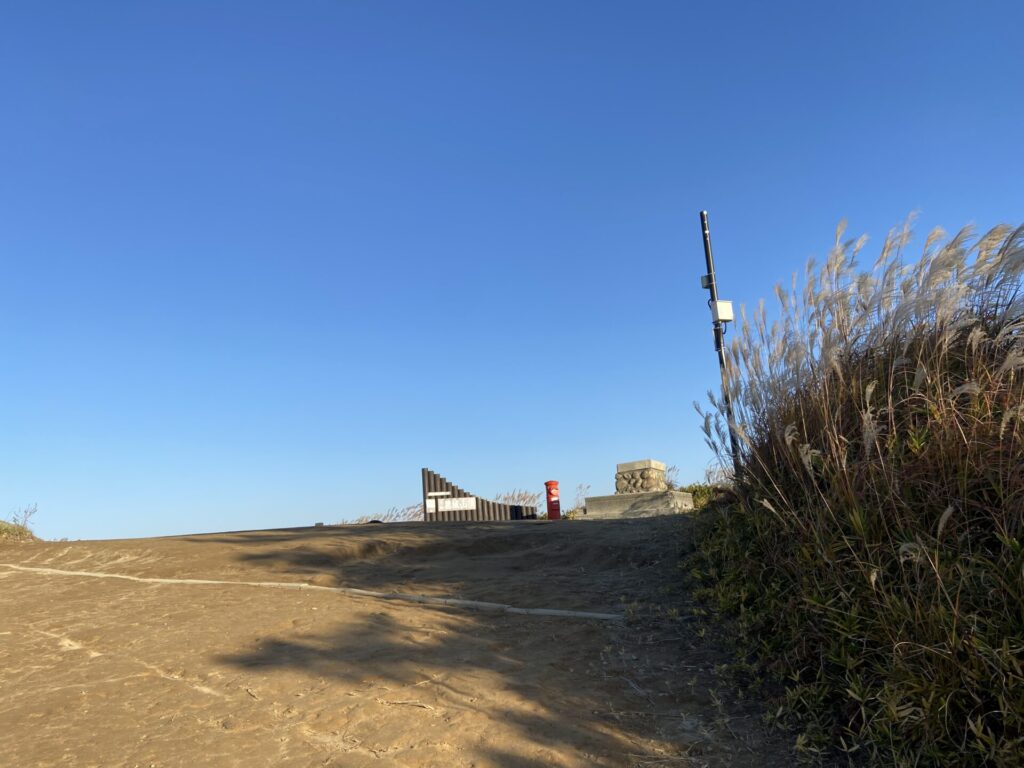
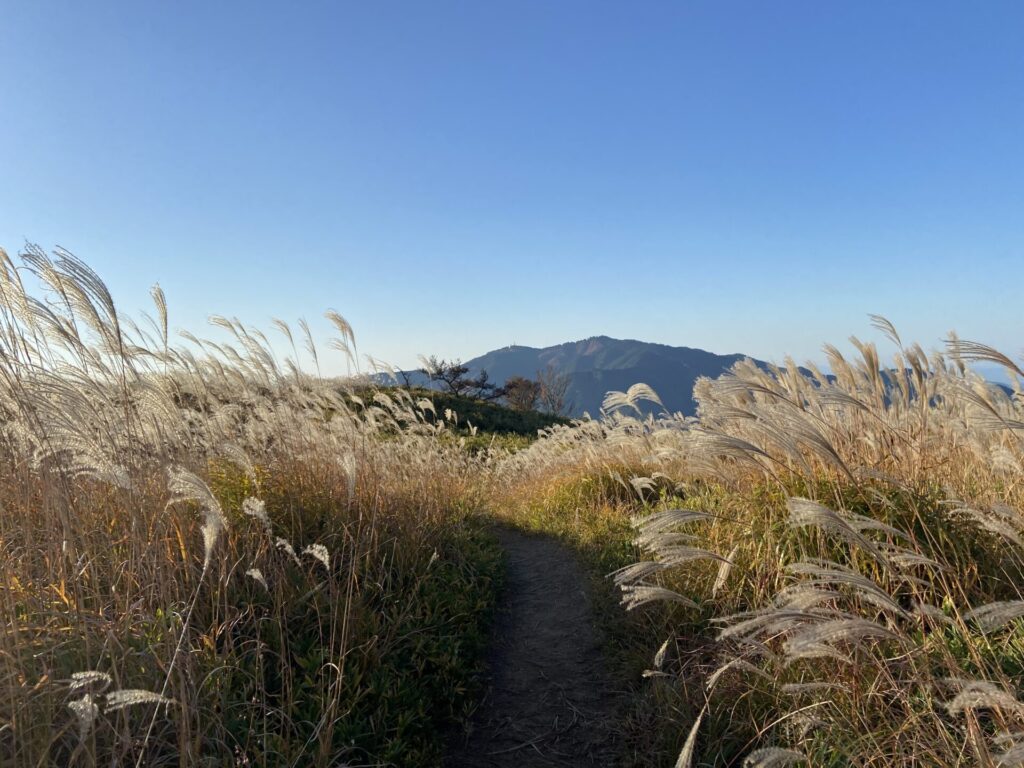
Mount Katsuragi is bustling with people during the azalea season, but it's quiet and feels like a completely different mountain in this season. Once, I climbed the mountain via the North Ridge route early in the azalea season. The ascent was comfortable with no one else around, but the descent was quite difficult. It gets crowded with people who couldn't get on the ropeway, some even climbing in slipper-like footwear, causing traffic jams. Waiting to pass by others often makes the descent take longer than the ascent. Mount Katsuragi is where En no Gyōja, the founder of Shugendō, is said to have first practiced his ascetic training. It's the starting point of the history of Shugendō and, along with Yoshino and Ōmine, is considered one of the "two great sacred sites of Shugendō." However, the mountain suffered a decline due to the anti-Buddhist movements and the abolition of the Shugendō sect in the early Meiji period, leaving pilgrimage sites and trails in disrepair. After World War II, efforts began to revive "Katsuragi Shugen." They rediscovered the old pilgrimage routes and restored the neglected sutra mounds, reviving the practices of Shugendō. The trails are now maintained as part of the Kinki Nature Trail and the Diamond Trail, connecting Kongō Mountain and Nijō Mountain, and are frequently used by local hikers. There's an annual long-distance hiking event called the Diamond Trail Rally. I participated in the 40 km course that goes from Nijō Mountain to Mount Katsuragi, then to Mount Kongō, and ends at Kimi Pass. The repetitive ascents and descents, the "staircase hell," are incredibly taxing, especially on my previously injured leg. Each time I participate, I think, "I'll never do this again," but I've done it three times (^^;). Walking while imagining the ancient people and what the mountains were like in the past is also enjoyable. Inspired during my hike, I started making a compost heap when I got home. I'll tell you more about it in my next blog post^_^!

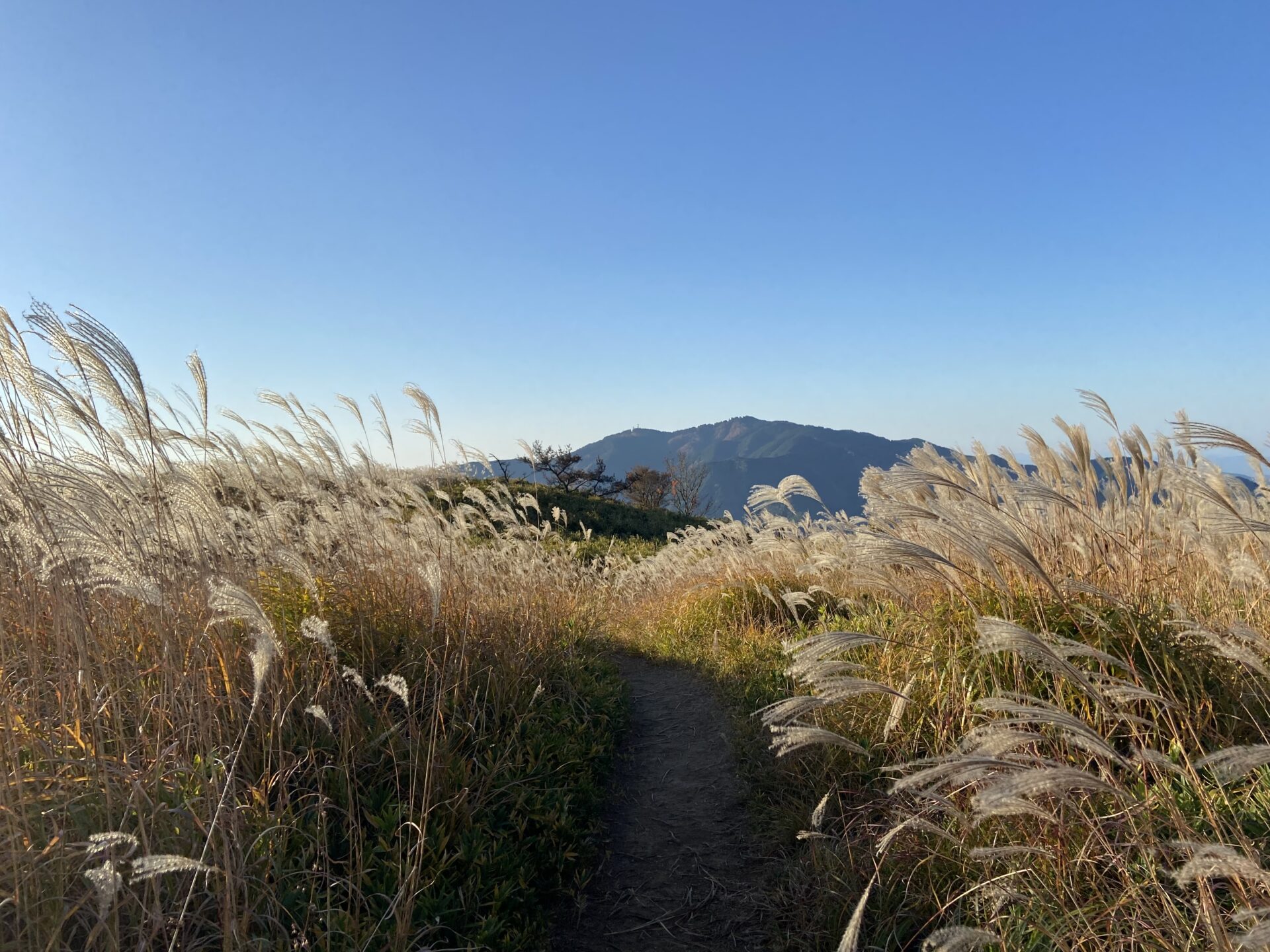
 This weekend, I went for an early morning hike to Mount Katsuragi. There have been daily news reports about bear sightings, but there are no bears on Mount Katsuragi, so bear bells are unnecessary. A few years ago, there was a rumor about a bear sighting on Mount Katsuragi, but I've hiked there alone many times and never felt the presence of bears. I wonder if it was a case of mistaken identity, or perhaps someone in a bear costume was spotted (^^). This year, there seems to be a poor acorn crop and other unusual changes in the mountains, which might be making life harder for the animals.
If you start climbing around 6 am, you can reach the summit by 7:30 am. The Tengu Trail has become more rugged than before.
This weekend, I went for an early morning hike to Mount Katsuragi. There have been daily news reports about bear sightings, but there are no bears on Mount Katsuragi, so bear bells are unnecessary. A few years ago, there was a rumor about a bear sighting on Mount Katsuragi, but I've hiked there alone many times and never felt the presence of bears. I wonder if it was a case of mistaken identity, or perhaps someone in a bear costume was spotted (^^). This year, there seems to be a poor acorn crop and other unusual changes in the mountains, which might be making life harder for the animals.
If you start climbing around 6 am, you can reach the summit by 7:30 am. The Tengu Trail has become more rugged than before.
 In the early morning, the mountain trails are quiet, and at the summit, it's often just me. Morning jogs or climbs at this time allow you to fully enjoy the solemn atmosphere as the sun rises, and it feels like you can draw energy from nature. Additionally, you can see many small birds flying around, possibly searching for their breakfast. This time of year is perfect for bird-watching.
In the early morning, the mountain trails are quiet, and at the summit, it's often just me. Morning jogs or climbs at this time allow you to fully enjoy the solemn atmosphere as the sun rises, and it feels like you can draw energy from nature. Additionally, you can see many small birds flying around, possibly searching for their breakfast. This time of year is perfect for bird-watching.